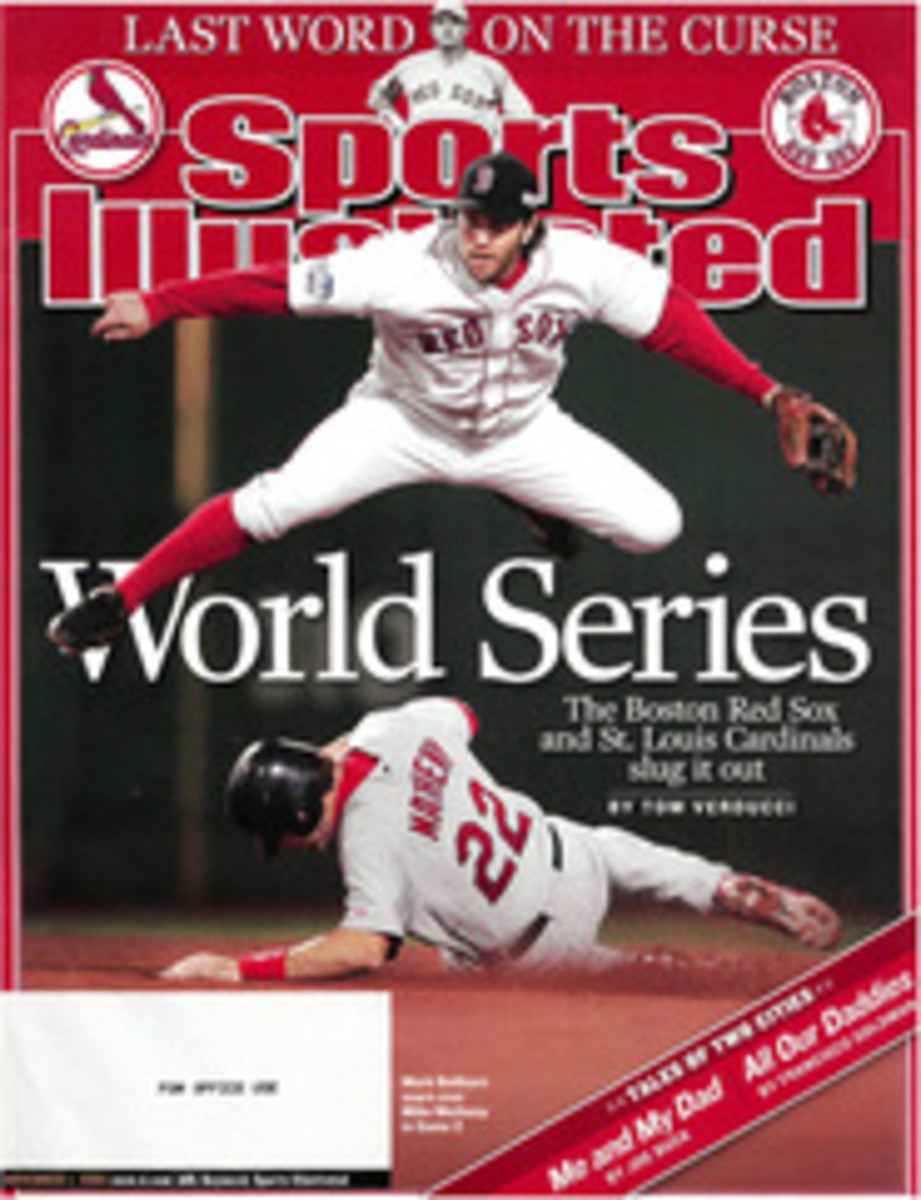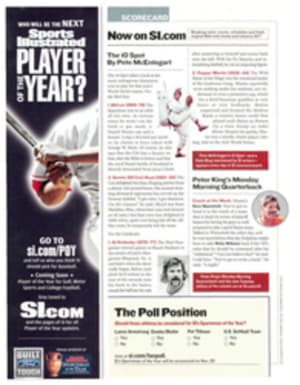
Matchmakers vs. the Machine
For Holly and Henry Stephenson, this year's baseball playoffs brought bad news: They lost their spots on the major league roster.
Their release was one of the quietest milestones in the game's history. For the last 23 seasons the Stephensons had scheduled the national pastime. Working from a cluttered office in their modest home on Martha's Vineyard in Massachusetts, the couple set the date and location of every big league game. Improbable as it sounds, a $4 billion empire depended on the Stephensons' ability to juggle the schedules of two leagues, 30 teams and 1,200 players.
The baseball schedule is the most complex in sports: 2,430 games in 26 weeks. "Few people understand how hard the job is," says Gene Orza, COO of the players' association, "and the Stephensons are the masters of it." Or were. Baseball is set to approve a 2005 schedule produced by a team from Carnegie Mellon, Georgia Tech and the Butler, Pa.-based Sports Scheduling Group (SSG). It is the sport's first fully computer-generated schedule.
While disappointed, the Stephensons weren't entirely surprised. Over the years they had been challenged by computer teams from Stanford and MIT, among other schools. None had produced a superior schedule.
"With 10 teams you can generate more possible schedule solutions than there are atoms in the universe," says Michael Trick, professor of operations research at Carnegie Mellon's business school. That the Stephensons pulled it off with 30 teams is, Trick says, "really remarkable."
Trick and Doug Bureman, a former Pirates executive, began working on baseball scheduling systems in 1996. Eight years and a thousandfold increase in computer power later, they had a successful system. Along the way they and other researchers formed the SSG and won contracts with several college leagues.
For the Stephensons, being trumped by technology is bittersweet. They got their start in the mid-'70s after investing much of their savings in an early home computer. "At the time we were in city planning in New York, working with mainframes, so the idea that you could own a computer and work from home was interesting," says Henry, 64. They found a way through a chance meeting with an NBA executive. Basketball was then upgrading its paper-based scheduling system, and the Stephensons proposed using their computer in the process. An eight-year stint as NBA schedulers ensued. That caught the attention of then American League president Lee MacPhail, who hired the Stephensons as consultants in 1980. The first full season scheduled by the couple was 1982.
The Stephensons devised their own programs, and the computer handled the mathematical grunt work, freeing them to find the best scheduling options. But they couldn't eliminate one thing that had vexed baseball schedulers since the 1940s: semirepeaters.
These blocks of games, in which groups of teams play nearly back-to-back series, lead to embarrassing imbalances, such as the 2004 National League Central slate that matched up the rival Cubs and Cardinals 19 times through July 20 but not once thereafter.
Trick and Bureman, with their advanced programming and industrial-strength computer, "did reduce the number of semirepeaters," says Katy Feeney, baseball's vice president of scheduling and club relations. "It was the best schedule. But there will still be people who are unhappy."
So fans needn't worry that a computer will steal one of their favorite gripes? No, says Phillies president Dave Montgomery, "I don't believe there is such a thing as a perfect schedule."
The Stephensons agree, but they're not giving up. Henry says, "We're working on a way to eliminate semirepeaters next year." As they say, the game is on.
Something Had to Give
Here are some scheduling oddities from the 2004 season
The Devil Rays and the Yankees met each Tuesday and Wednesday for three straight weeks in late March and early April, in three ballparks (Tokyo Dome, Tropicana Field and Yankee Stadium).
The Expos didn't play in Montreal from June 25 through July 22.
The Dodgers played only three regular-season games outside California after Sept. 5.
The Blue Jays' 19 games against the Yankees were all after July 21.
The Brewers began and ended the season with a four-game series in St. Louis. They played there only twice the rest of the year.
COLOR PHOTO
ELSA/GETTY IMAGES
NO LATE DATES
Front-loading the Cardinals-Cubs season series was a blemish on the Stephensons' 2004 schedule.
COLOR PHOTO
RICK FRIEDMAN (STEPHENSONS)
[See leadin above]
  [See caption above]

